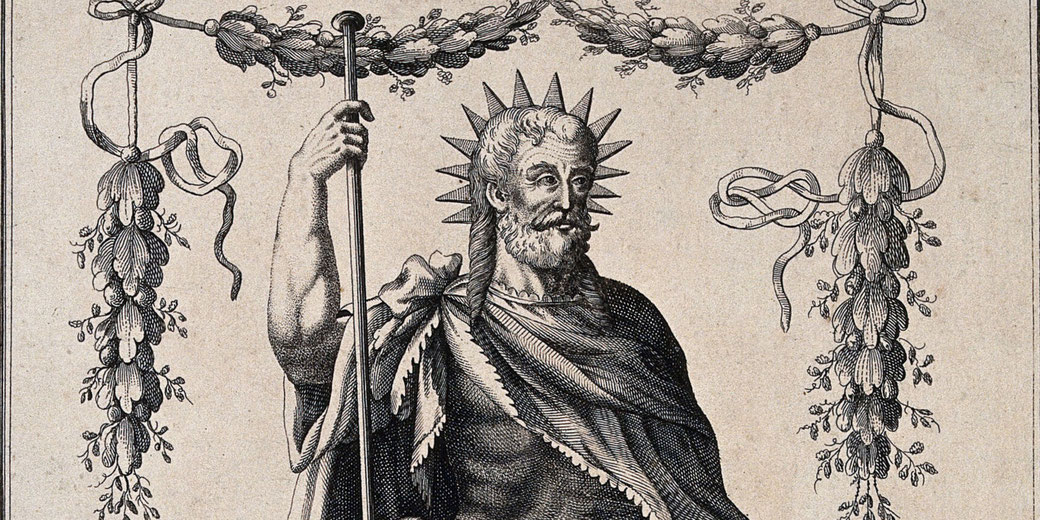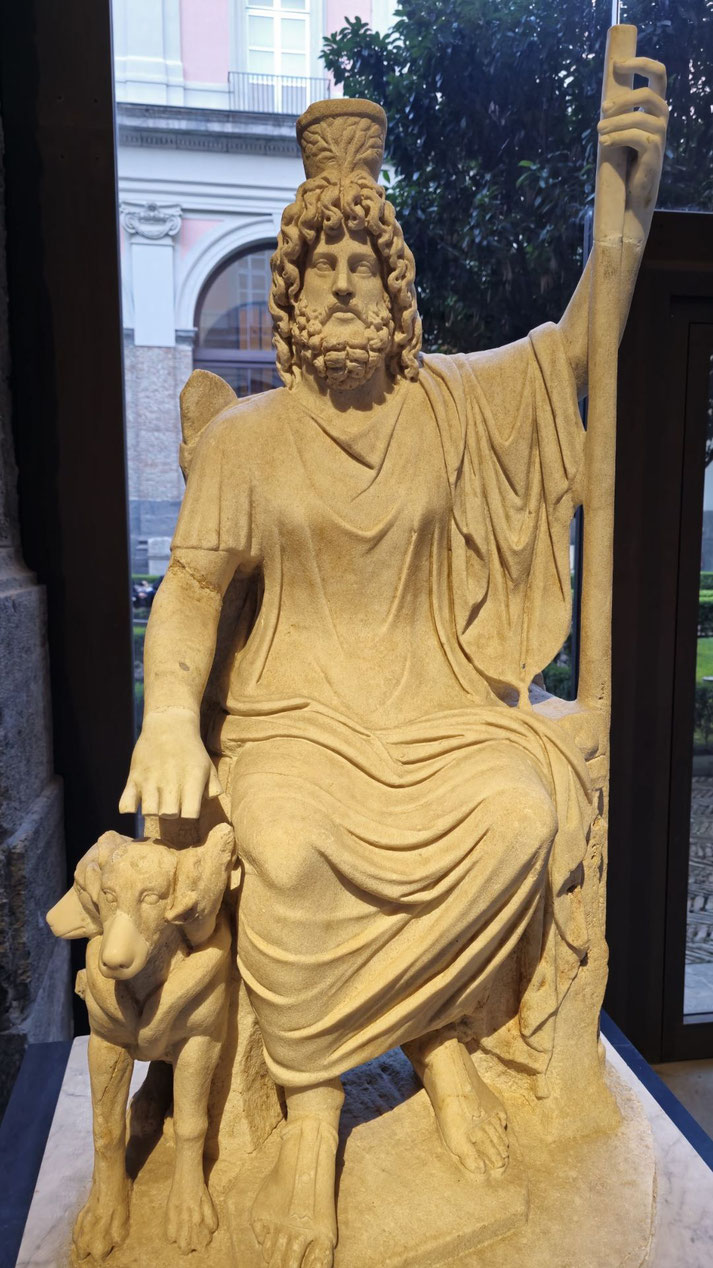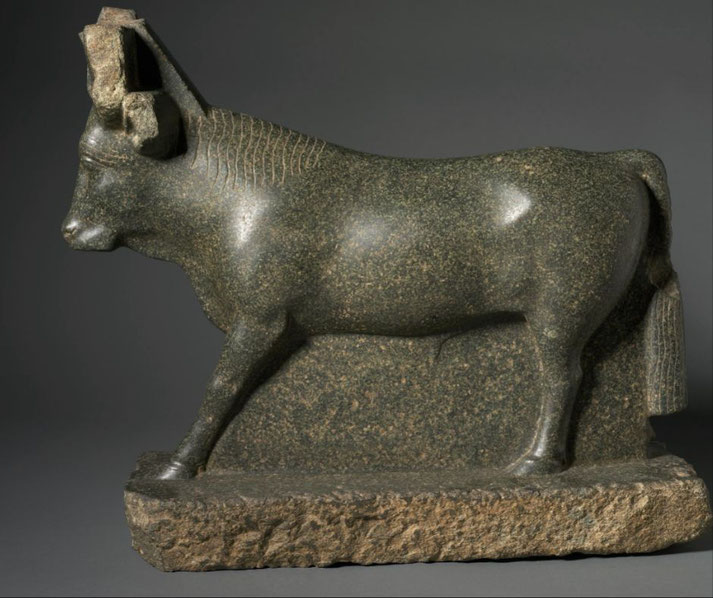Serapis: The purpose-made god who bridged Greek and Egyptian mythologies

After Alexander the Great had conquered Egypt in 332 BCE, the Macedonian generals who had divided his empire needed more than territory to secure their rule.
Ptolemy I Soter had established his authority over Egypt and governed a land where two very different religious traditions coexisted: native Egyptians practised ancient temple-based worship, while the growing Greek population followed their own gods and ceremonies.
Instead of forcing either group to change, Ptolemy chose to invent a new god. Serapis was his creation and did not grow naturally from traditional Egyptian folklore or tribal memory, but evolved from the pre-existing cult of Osiris-Apis at Memphis, which Ptolemaic priests reinterpreted to support a new combined purpose.
Rather, he was designed to present an antique quality acceptable to both peoples and to strengthen the image of Ptolemaic rule.
How to create a god
To begin the process, Ptolemy gathered priests and advisors who understood both Egyptian and Greek religious customs.
Among them was Timotheus, formerly a high priest of Demeter at Eleusis, whose experience with mystery cults helped form the religious strategy.
The team selected elements from existing gods, especially Osiris and Apis from the Egyptian pantheon, and reworked them into a new divine identity that could attract Greek worshippers.
The name “Serapis” itself came from blending “Osiris-Apis” into a single Greek form.
At first, Serapis had appeared only in Alexandria, the new capital that Alexander had founded.
Construction of the Serapeum had likely begun during the reign of Ptolemy I Soter and likely continued under his successor Ptolemy II Philadelphus, which transformed the Rhakotis district of Alexandria into a religious and political centre.
According to ancient sources, particularly Aelian, the first large statue of Serapis in Alexandria was probably sculpted by Bryaxis, a Greek artist who had worked on the Mausoleum at Halicarnassus, though this attribution is uncertain.
Unlike older Egyptian temples, the Serapeum followed Greek architectural principles.
Its scale, statues, and ceremonies displayed Greek ideals of beauty and power.
When Ptolemy placed the cult at the heart of the city, he united divine approval and royal power. Serapis was the divine patron of a new political order.
Over time, the temple’s influence expanded. Priests likely spread the cult to other cities under Ptolemaic control, as merchants, soldiers, and administrators, who travelled widely, carried stories of Serapis and founded shrines.
When the dynasty encouraged this expansion, it ensured that worship of Serapis became an expression of loyalty to the kingdom.
The Canopus Decree of 238 BCE, issued under Ptolemy III, mentioned Serapis among the honoured deities of Egypt and indicated how firmly he had been integrated into the official religious framework of the Ptolemaic state.
Deciding what he should look like
To attract support from both Greeks and Egyptians, Serapis required a visual identity that blended familiar symbols with appealing aesthetics.
Egyptian gods were often shown with animal heads, while Greek gods appeared as idealised human figures.
The creators of Serapis chose to follow Greek sculptural forms but inserted symbols drawn from Egyptian belief.
He appeared as a mature man with thick hair and a full beard, and he sat on a throne and wore a modius, a grain measure, on his head.
This image combined Greek ideas of authority with Egyptian concepts of fertility and abundance.
At his feet sat Cerberus, the three-headed dog of Hades, which suggested control over the underworld in Greek symbolism.
Cerberus had no Egyptian counterpart. Regardless, the motif of underworld authority echoed Osiris as lord of the afterlife, which meant that Greek belief also associated Serapis with Hades and death.
Over the next few decades, this image became fixed, as artists reproduced it in sculpture, relief, and coinage.
Ptolemaic rulers placed his image on silver tetradrachms, which often appeared beside their own.
Under Emperor Hadrian, coins were minted showing Serapis on the reverse, often seated and holding a sceptre, with inscriptions such as 'IOVIS SERAPIS'.
At the same time, his Greek-style appearance helped him gain credibility in foreign cities.
Greek pilgrims could enter his temple without discomfort. By contrast, Egyptian priests could interpret his symbols in terms they understood.
For both groups, he offered something recognisable.

How should he be worshipped?
To maintain broad appeal, Ptolemaic priests developed a system of ceremonies that mixed Greek and Egyptian customs.
At Alexandria’s Serapeum, the services used Greek language, dress, and ceremony.
Incense was burned, hymns were sung, and worshippers approached the god as they would in a Greek temple.
However, Egyptian traditions remained present in the form of dream incubation, priestly orders, and oracles.
For example, people who wanted guidance might sleep near the statue of Serapis in the hope of receiving a dream-message.
This practice resembled Greek healing cults dedicated to Asclepius but had long existed in Egyptian temples.
When priests included both traditions, the cult attracted followers from different backgrounds.
In particular, personal devotion played a key role, which meant that Serapis was not worshipped solely for state reasons.
Common people asked him for healing and protection that might secure greater prosperity and his priests often promoted the idea that Serapis could assist individuals who prayed to him with sincerity.
For Egyptians, he held the promise of resurrection. For Greeks, he offered restorative healing founded on reason together with a settled civic order.
Some Egyptian priests initially resisted the cult of Serapis, and they regarded it as an artificial creation imposed by foreign rulers.
Later generations eventually accepted him into common religious practice.
Over the following decades, the Ptolemies built temples to Serapis in Cyprus, Asia Minor, mainland Greece, and the islands.
By the second century CE, temples to Serapis had been established in cities such as Carthage, Lugdunum, Ephesus, and Thessalonica, which demonstrated the cult's geographic spread.
Some sources suggest he may have been worshipped in Londinium, though no direct archaeological evidence confirms this.
This example showed the cult's geographic spread. Local elites joined the cult, often to show loyalty to Alexandria.
As a result, the worship of Serapis reinforced the status of Ptolemaic Egypt abroad.
How to fit Serapis into Greek mythology
To make Serapis acceptable to Hellenic intellectuals and priests, scholars in Alexandria connected him with existing Greek myths.
Rather than introducing him as a foreign or barbarian god, they presented him as an expression of Greek divine principles.
In different sources, Serapis appeared as a form of Hades, Asclepius, Dionysus, or Zeus.
Writers such as Tacitus and Plutarch debated whether Serapis had Egyptian, Greek, or even Babylonian origins, which showed both his mixed nature and the contest over religious authenticity.
Each of these associations added to his appeal. As Hades, he ruled the underworld. As Asclepius, he healed the sick.
As Dionysus, he stood for regeneration and mystery. As Zeus, he controlled the heavens and kingship.
This flexibility helped individuals interpret Serapis in ways that matched their personal beliefs.
Indeed, philosophers also adopted him. The Stoics, who believed in divine reason as the main idea of the universe, described Serapis as a form of logos that brought together order and public stability.
His worship therefore satisfied both emotional and rational needs.
When the cult presented him as a synthesis of Greek divinity, it avoided resistance from conservative priests and sceptical thinkers.
Worshippers did not need to reject other gods. Instead, they could include Serapis in their prayers, ceremonies, and dedications as an additional presence who unified several divine traits.

Serapis under the Romans and eventual decline
After Rome had taken control of Egypt in 30 BCE, the cult of Serapis generally continued to grow.
Roman emperors were eager to gain favour in the east, so acknowledged his importance.
Several, including Hadrian and Caracalla, visited Alexandria and honoured Serapis with sacrifices and public gestures.
Under their patronage, temples to Serapis appeared across the empire, from Gaul to Syria, and from the Danube to North Africa.
In Rome itself, a major sanctuary was established at the Iseum Campense, where Serapis was worshipped alongside Isis, although the site remained primarily devoted to her worship.
There, the cult flourished among the townspeople. Free citizens, freedmen, and foreigners joined in festivals, mystery rites, and temple ceremonies.
Inscriptions show that the god held meaning for people across many walks of life.
Later, as Christianity gradually grew in influence, tensions increased, as the new religion viewed pagan worship as dangerous and false.
In 391 CE, Emperor Theodosius I banned pagan rites. The following year, Christian mobs destroyed the Serapeum in Alexandria.
The destruction of the Serapeum in 392 CE preceded further outbreaks of religious violence in Alexandria, which included the brutal murder of the philosopher Hypatia in 415 CE and caused the collapse of the city’s final pagan institutions.
After the destruction of the temple, public worship of Serapis had stopped quickly.
Without support from the state, the priests dispersed, emples closed and statues were buried, hidden, or smashed.
A few images survived in private homes, but the cult no longer had influence. His name was once declared across the empire, and now it belonged to memory.
The invention of Serapis had largely succeeded for over six hundred years because it solved a real political and cultural problem.
When the Ptolemies combined the visual language, symbols, and theology of two civilisations, they created a god who could speak to everyone in their kingdom.
Yet his fate remained tied to the power that had made him. When that power disappeared, so did he.
What do you need help with?
Download ready-to-use digital learning resources
Copyright © History Skills 2014-2025.
Contact via email
With the exception of links to external sites, some historical sources and extracts from specific publications, all content on this website is copyrighted by History Skills. This content may not be copied, republished or redistributed without written permission from the website creator. Please use the Contact page to obtain relevant permission.





